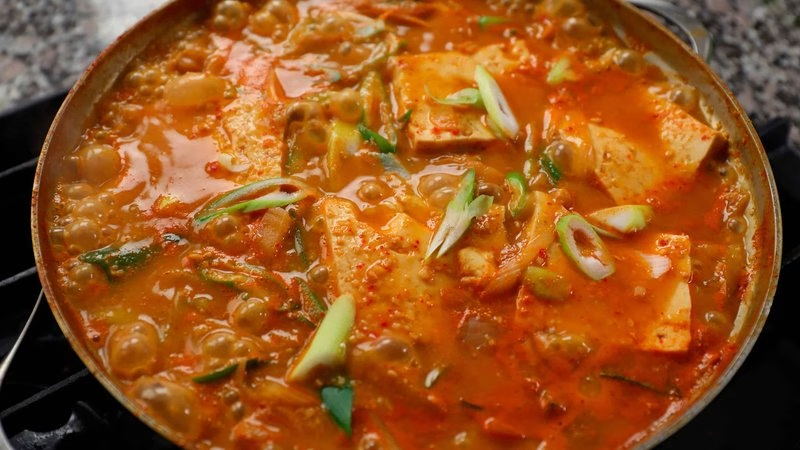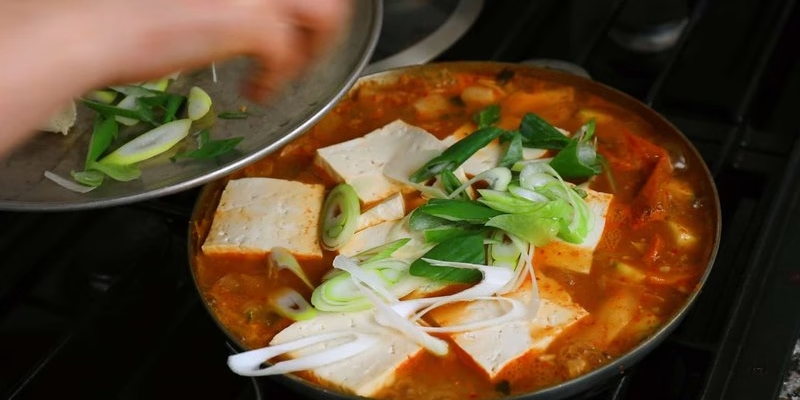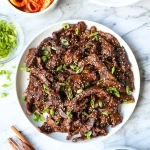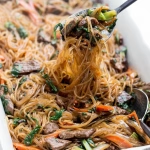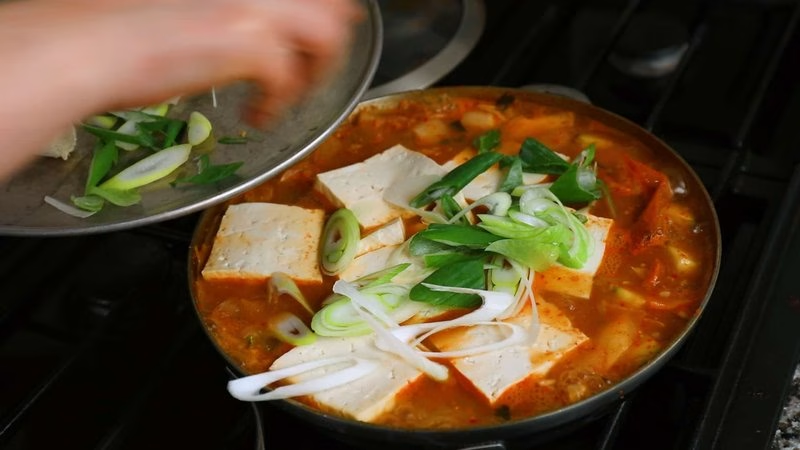
Have you ever tasted the rich, umami-packed flavors of Cheonggukjang (Fermented Soybean Stew)? This beloved Korean dish is not just a meal; it’s a warm hug in a bowl that brings comfort and nourishment. Known for its robust aroma and distinctive flavor, Cheonggukjang is cherished by many as a perfect winter dish or a cozy dinner option any time of the year. Its origins trace back centuries, making it an integral part of Korean culinary tradition.
This stew is made primarily from fermented soybeans, offering a unique, pungent flavor that might surprise first-timers. Don’t worry; even if you’re not familiar with fermented foods, this stew is surprisingly easy to make at home. In this article, you’ll learn all about Cheonggukjang, from the essential ingredients to variations and pro tips. So, grab your apron as we dive into the flavorful world of Cheonggukjang (Fermented Soybean Stew)!
Ingredients
| Ingredient | Measurement | Description |
|---|---|---|
| Fermented soybeans | 200g | Fermented soybeans are the star of Cheonggukjang, providing a deep, savory flavor that can’t be replicated. |
| Water | 5 cups | Water helps to extract the flavors from the fermented soybeans and other ingredients, creating a hearty broth. |
| Garlic | 5 cloves, minced | Fresh garlic enhances the aroma and adds depth to the stew. |
| Green onions | 2, chopped | Green onions not only add a fresh crunch but also a mild onion flavor that balances the richness of the stew. |
| Tofu | 200g, cubed | Tofu adds protein and a soft texture, soaking up the flavors of the stew. |
| Carrots | 1, diced | Diced carrots bring a touch of sweetness and color to the dish. |
| Pork belly (optional) | 150g, sliced | Pork belly adds a savory richness but can be omitted for a vegetarian version. |
| Salt and pepper | To taste | Season to enhance flavors, making your Cheonggukjang complete. |
Step-by-Step Instructions
- Prepare the Ingredients – Start by rinsing the fermented soybeans in cold water. You want to remove any excess salt or impurities. If you’re using pork belly, slice it into bite-sized pieces. Chop the vegetables, including carrots and green onions, to have everything ready for cooking.
- Cook the Pork Belly – In a large pot, heat a splash of oil over medium heat. Add the sliced pork belly (if using) and cook until it’s browned and crispy. This step adds a layer of flavor to your Cheonggukjang.
- Sauté the Aromatics – Add the minced garlic to the pot and sauté it until fragrant. Be careful not to burn it! The aroma will fill your kitchen, making you anticipate the delicious meal ahead.
- Add the Soybeans and Water – Stir in the rinsed fermented soybeans and pour in the water. Bring the mixture to a boil, then reduce the heat and let it simmer for about 10-15 minutes. This process helps to meld the flavors.
- Add the Vegetables and Tofu – Toss in the diced carrots, tofu cubes, and chopped green onions. Let it simmer for another 5-10 minutes. The vegetables should be tender, and the tofu infused with the savory broth.
- Season and Serve – Taste the stew and season with salt and pepper to your preference. Serve Cheonggukjang (Fermented Soybean Stew) hot, ideally accompanied by a bowl of steamed rice and a few side dishes.
Pro Tips
- For a spicier kick, consider adding a chopped chili pepper while sautéing the garlic.
- Let the stew simmer longer for a thicker consistency; the flavors will deepen as it cooks.
- If you’re short on time, use store-bought fermented soybean paste instead of whole fermented soybeans for a quicker meal.
- Consider adding other vegetables like zucchini or mushrooms for additional flavor and nutrition.
Nutritional Information
| Nutrients | Per Serving |
|---|---|
| Calories | 220 |
| Protein | 15g |
| Carbohydrates | 25g |
| Saturated Fats | 1g |
| Fiber | 6g |
| Cholesterol | 30mg |
| Sugars | 3g |
| Fat | 9g |
FAQs
- What is the best way to store Cheonggukjang (Fermented Soybean Stew)?
- Store leftovers in an airtight container in the refrigerator for up to three days. Reheat before serving.
- Can Cheonggukjang (Fermented Soybean Stew) be made vegan or gluten-free?
- Yes! Simply omit the pork and use tofu for protein. Ensure the fermented soybeans are gluten-free.
- What are the best side dishes to serve with Cheonggukjang (Fermented Soybean Stew)?
- Pair this stew with side dishes like kimchi, pickled vegetables, or a simple salad for a complete meal.
- How long does it take to prepare Cheonggukjang (Fermented Soybean Stew)?
- Preparation and cooking can take about 30 to 45 minutes, making it a quick and nutritious dinner option.
- Can I freeze Cheonggukjang (Fermented Soybean Stew) for later?
- Yes, you can freeze it for up to a month. Thaw in the refrigerator before reheating.
- What is the origin of Cheonggukjang (Fermented Soybean Stew)?
- This dish hails from Korea and has been enjoyed for centuries, particularly during the cold winter months.
- Is Cheonggukjang (Fermented Soybean Stew) healthy?
- Absolutely! It’s high in protein, fiber, and probiotics, promoting gut health.
- Can I add other proteins to Cheonggukjang (Fermented Soybean Stew)?
- Definitely! Chicken, beef, or even seafood can be added for different flavor profiles.
Now that you know how to make Cheonggukjang (Fermented Soybean Stew), it’s time to roll up your sleeves and give it a try! This comforting dish not only warms you up but also introduces your palate to the rich tradition of Korean cuisine. Whether you stick to the classic recipe or explore variations, the experience of cooking and sharing this stew with friends and family is invaluable.
So, what are you waiting for? Gather your ingredients and start your culinary adventure today! Once you’ve tried this recipe, we’d love to hear about your experience. Did you customize it? What tips did you find helpful? Let us know your thoughts in the comments below!
